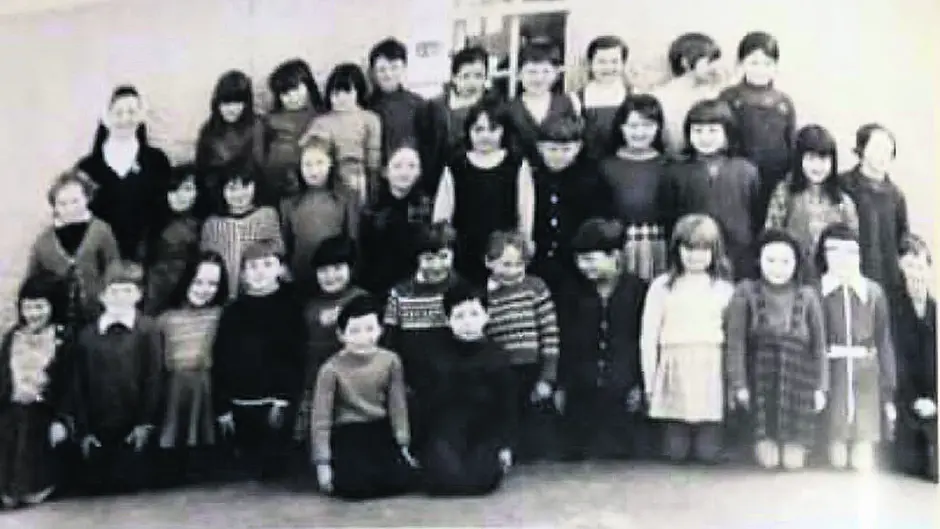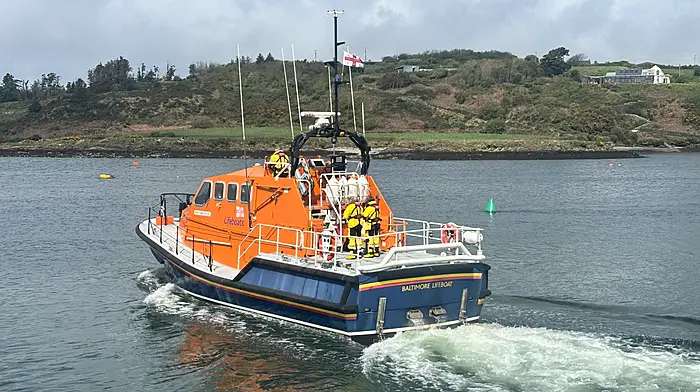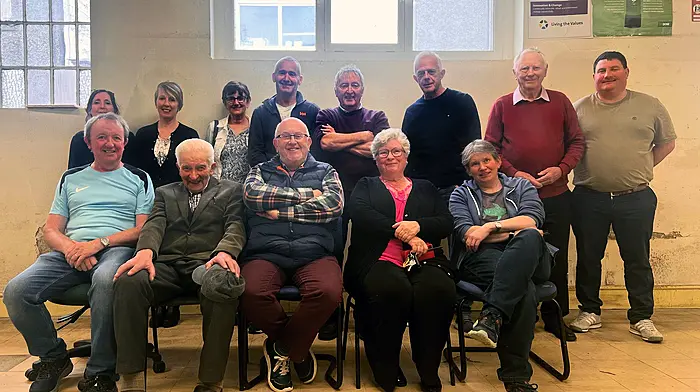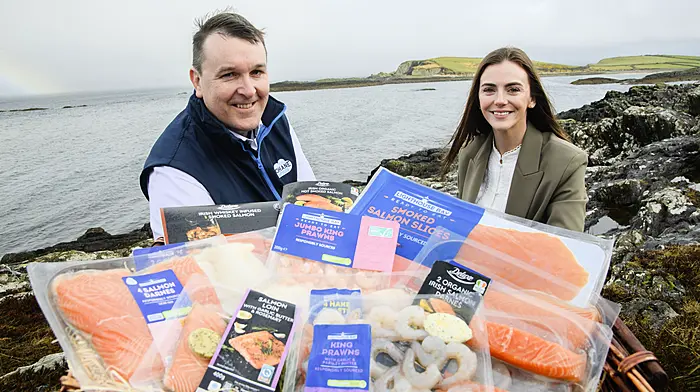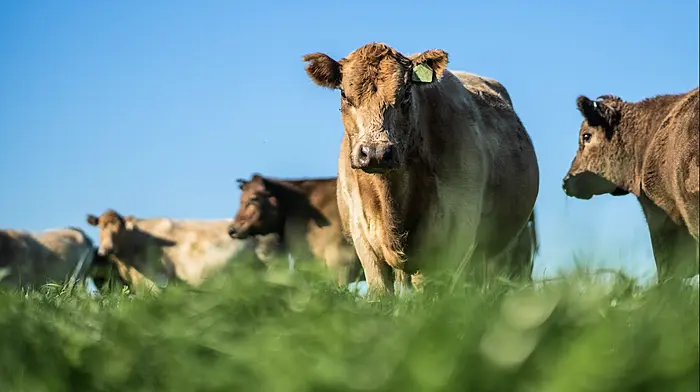Lining up, covering the text books with brown paper, singing ‘1,2,3 O’Leary’ in the yard, and eating jam sandwiches for lunch, was all in a day’s work at primary school, writes Maria C Henry
WHEN I went to school in Beara in the 1970s there was no such thing as a school uniform. I never knew what an after-school club or summer camp was. And as for school dinners? Never hard of them!
And of course, there was no pre-school education. My first day at school, was the sharp shock of being dragged away from my mam and into a world of regimented rules and discipline. And it must have been devastating for my poor mother, not having her precious darling around. Sure, what would she do with her day?
I attended primary school when preparation was a simpler affair. There were no fancy rucksacks or lunchboxes with the latest cartoon characters on the outside. There was no trip to the city for the going-back-to-school shopping. My mam purchased everything she needed in Hanley’s or Wisemans. They were the town’s emporiums.
I wore my normal everyday clothes to school. Which meant my mother spent a lot of time in the hot press gathering clean clothes for the day ahead. I suppose she was lucky she had one of those new-fangled, twin-tub washing machines for the daily changes of attire, and thankfully she loved ironing cos she spent hours at it every night after she packed me off to bed.
The first weeks back at school were tough. The liberal days of playing outside until dark had disappeared, and the bedtime routine was in force. My mother’s lie-in was also gone. Now she had to get up very early every morning to light the fire. There was no central heating, and she wanted to make sure at least the kitchen was warm when I ate my porridge.
I, along with thousands of other students in the country, attended a Catholic school. The local Convent of the Sisters of Mercy ran mine. Or the penguins, as we cheeky pups called them!
The first thing I learned before I entered the school for the first time, was how to form a line. I had to line up to go anywhere, literally – the yard, the classroom, the cloakroom. I couldn’t move unless I was in a line!
When the front door opened, the chatter and skiting stopped, and silence descended. With an index finger on their lips, the nuns commanded their audience, of which many a world leader would be envious. Those tyrant nuns weren’t ones for ‘the craic’.
Hanging up your coat on the hook in the cloakroom was my first job of the day. Every class had its own section, from baby infants to sixth class. Once in the classroom at my designated desk, the roll call was followed by meek children whispering ‘anseo’. The day began with prayers.
My memories of baby and junior infants are vague (it was, after all, over half a century ago). I learned to count and spell small words. There was a piano. We sang hymns, always hymns. Followed by more hymns.
The first sentence of Irish I learned was: ‘An bhfuil cead agam dul do dtí an leithreas? I had to put my hand up and say those magic words in order to go to the smelly toilets with the hard, square toilet paper that ripped my delicate skin.
 Maria's grandkids Marco and Ciaran on their first day back at school.
Maria's grandkids Marco and Ciaran on their first day back at school.
On Mondays, I arrived in class with leaves, pine cones and conkers for the nature table. Loads of kids brought tadpoles. It’s a wonder the frog population of the country isn’t extinct. I drew on large sheets of paper with charcoal. Most days we rolled marla on the squares of lino, so it wouldn’t stick to the table.
There were tables covered in newspaper with saucers of brightly coloured paints and jam jars full of water and brushes. I used one of my dad’s old shirts, worn back to front to save my good clothes from becoming multicoloured.
I wrote the news daily in senior infants. Today is Monday. It is a cold day. My friends are Annette and Edel. Today is Tuesday. The sky is grey. My friends are Lisa and Mairead.
I made sure I changed the names of my friends daily, so I didn’t fall out with anyone.
The best laughs were when someone called a nun ‘mammy’. They were never allowed to live it down. Ever. Or I huddled with my friends, around the bosca bruscair sharpening our pencils, having a giggle at the nun covered in chalk.
The ‘grace before meals prayer’ before lunch, followed by the ‘grace after meals prayer’ after lunch, was a daily ritual. One particular nun I had made us sing both and sometimes conducted the singing by waving her hands like a conductor. How could she expect us not to snigger?
In those times, there was not much competition to keep up with the Joneses. Ireland was fairly poor, and parents did the best they could with our lunches.
My sandwiches comprised jam most days, except Monday, when I would have leftovers from the Sunday dinner. My drink? A bottle of diluted orange. If I was lucky, there might have been a triangle of Galtee, a piece of fruit, or occasionally buttered digestive biscuits. My mam packed them neatly into a paper bag. Of course, we all got a small bottle of milk with the big dollop of cream on top.
The best part of the school day was being left out in the playground. There was a 15-minute break at 11am and 30 minutes at 1pm. You made the most of those minutes of freedom. We played hop-scotch and football and used our coats as goal posts. We played with two tennis balls against a wall, singing 1,2,3 O’Leary, 4,5,6 O’Leary, 7,8,9 O’Leary, 10 O’Leary, and start again. Skipping ropes were a big favourite.
By the time I graduated to first class, there were books and homework. Ann & Barry for English, Ronán & Áine as Gaeilge and Busy at Maths. I covered my books in brown paper or, if we recently had the stations, with leftover sitting room wallpaper. I would write my name on the cover in my best handwriting.
Then there were the dreaded weekly spelling tests and reciting the multiple times tables. I remember standing up and being petrified with all eyes of the classroom on me, praying I wouldn’t get any wrong. At the same time, watching the pulsating vein in the nun’s neck that waited for me to fail. The palatable taste of relief was felt from every child when their turn was over.
 Who remembers ‘Busy at Maths’?
Who remembers ‘Busy at Maths’?
This was also the year we prepared for our first holy communion, so it was prayers, followed by more prayers. Prayers for every occasion. Reciting and learning off by heart our catechism was the daily focus. We didn’t need to know what anything meant, just be able to quote the answers. The best part of that entire year was the Holy Communion after party. You got to wear your ‘rigout’ a week later in school. We had buns, Taytos and TK lemonade when all of those were a rare treat. We stuffed ourselves until there was nothing left, and we were spinning out of control from the sugar rush.
In second class, they segregated boys and the girls, and the lads went off to the boys’ school. That would have been a common occurrence throughout the land. It made sense back then to separate us. The boys were geared up for the outside world of work and further education, while us girls knew our life ahead was going to be queens of our kitchens, and child rearing. We had no ideas above our station.
There is no doubt primary school has changed in the last five decades. From the books, to the activities in the classrooms, to the games in the yard. For students today, it is a totally different experience from the ones their parents and grandparents had.
Now I sometimes have the pleasure of taking my grandkids to primary school. They are welcomed at the door by their smiling teachers.
The kids seem excited to enter the building to start their day learning, and playing with their friends.
The bright classrooms are covered with beautiful pieces of art and colourful creations. And most importantly? They love school.

